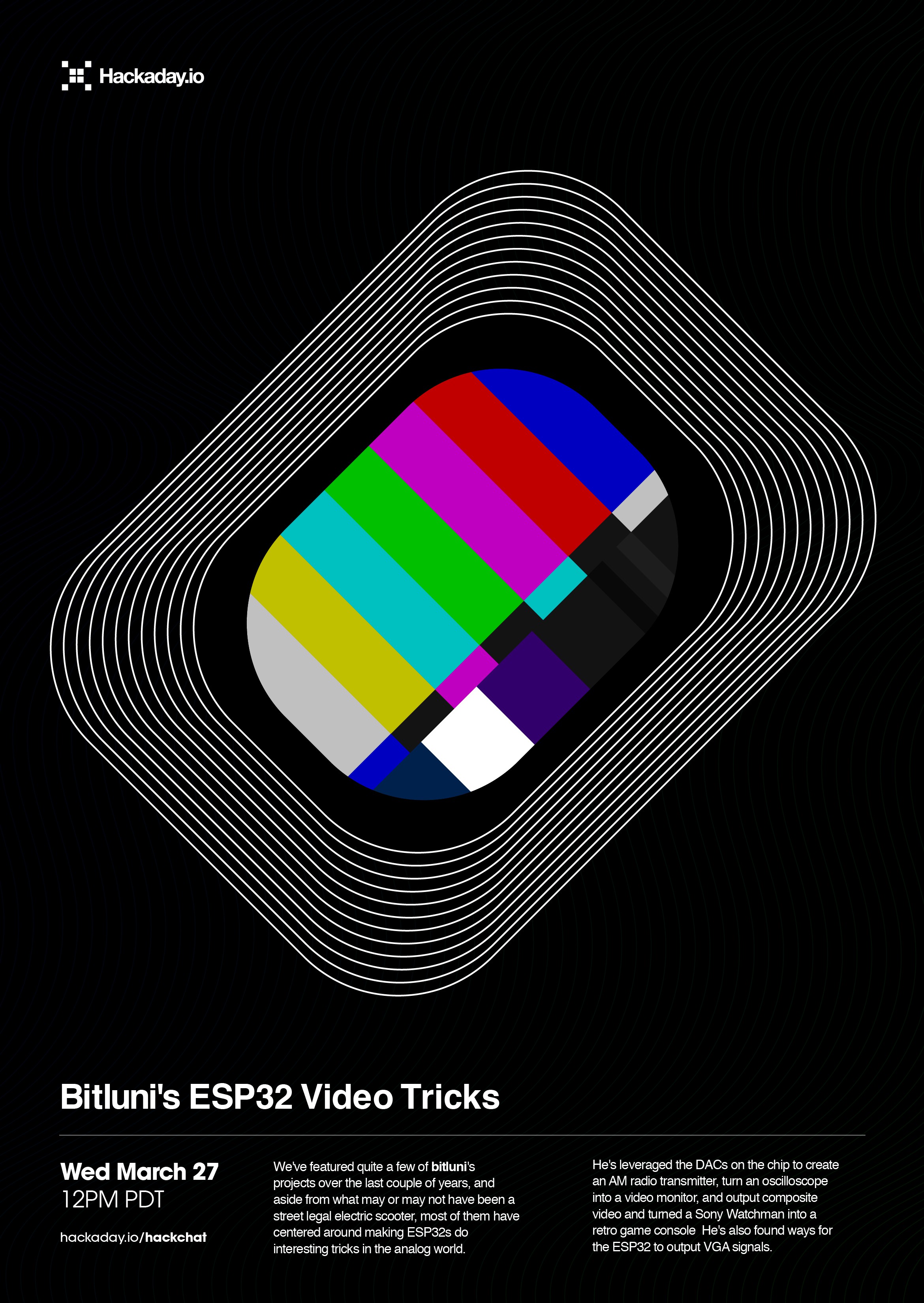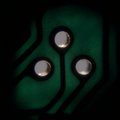bitluni will be hosting the Hack Chat on Wednesday, March 27, 2019 at noon PDT.
Time zones got you down? Here's a handy time converter!

We've featured quite a few of bitluni's projects over the last couple of years, and aside from what may or may not have been a street legal electric scooter, most of them have centered around making ESP32s do interesting tricks in the analog world. He's leveraged the DACs on the chip to create an AM radio transmitter, turn an oscilloscope into a video monitor, and output composite video. That last one was handy for turning a Sony Watchman into a retro game console. He's also found ways for the ESP32 to output VGA signals. Looks like there's no end to what he can make the versatile microcontroller do.
Although the conversation could (and probably will) go anywhere, we'll start with video tricks for the ESP32 and see where it goes from there. Possible topics include:
- Tricks for pushing the ESP32 DACs to their limits;
- When to use an external DAC;
- Optimizing ESP32 code by running on separate cores; and
- What about HDMI on the ESP32?









Better late than never. Here are a few more options, that now considering the RiscV version of the esp32 also hasn't a basic little tiny video circuit, might help.
There are a number of HDMI over USB protocols, even compressed. So, that might be a way, where, with the right drivers, you plug a HDMI adaptor in.
There is an Intel motherboard video bus, that sends the signal to the bus digitally where the interface converts it to the video format.
Another option is Miracast on the wifi equipped boards. With divers, maybe the latency can be reduced.
Thanks a lot for the effort. I had the same problem with a microcontroller I had previously considered using a controller rated at 96 billion instructions a second , as the world's record holder for low energy per instruction, but not a graphic mode, a memory bus that was basically a software controlled parralel port, and hardly any memory. But, they still managed to run 16 colour vga through it, all in software, and a whole system, with those billions of instructions a second. Of course, it was the GA144.